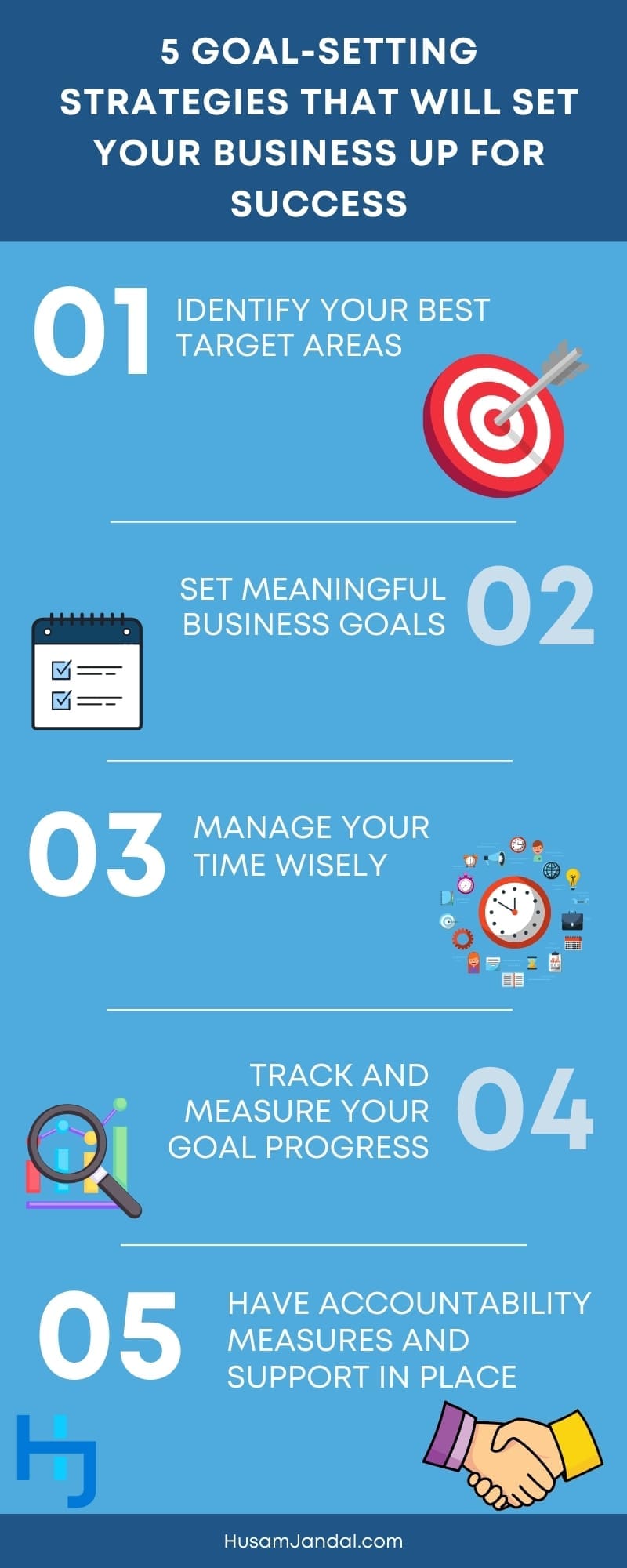
Did you know that less than five percent of businesses reach their annual goals? This stat from a recent Clutch survey hits home something business owners know all too well. Achieving goals and accelerating business growth is hard. But, despite how this stat might look, it doesn’t have to be an insurmountable challenge. When you change your approach to goal planning, everything else falls into place.
The right goal-setting framework will dramatically improve your success, but you need to move beyond acronyms like SWOT and SMART to generate meaningful results. In this article, I’ll walk you through how to use both methods effectively and build upon them to create goals you and your team not only stick to, but that deliver the business growth you seek.
1. Identify Your Best Target Areas
Many entrepreneurs begin with goal setting. For example, they know they want to increase revenue by a certain percentage, so they dig in with a marketing strategy that will ideally get them there or set sales goals that ensure the team meets it. The problem is, this doesn’t necessarily mean the right goals are selected, nor does it address where the company is here and now—only where stakeholders want it to be. Try performing a SWOT analysis before you set your goals instead.
Explore Key Areas Through SWOT Analysis

To begin, create a grid or 2×2 matrix and label each section with one of the following values of the SWOT acronym:
- Strengths: Things your company does well and resources you can draw on.
- Weaknesses: Areas your company can improve in and areas in which you lack resources.
- Opportunities: Trends you can capitalize on or areas in which your strengths create advantages over your competitors.
- Threats: Potential threats your weaknesses could expose you to, areas your competition is excelling in, and other threats that could damage your company’s position.
Jot down notes in each section. For example, maybe your business has incredibly loyal customers who rave about you. They’ll be noted in your “strengths” list. Perhaps you have limited access to working capital and are on a tight budget. That will be indicated in the “weaknesses” section. Using these examples, an opportunity might be referrals from your existing customers, while a threat might be the killer marketing campaign your competitor is running due to their larger budget.
2. Set Meaningful Business Goals
I recently spoke on the difference between SMART goals and meaningful targets for your sales team. The same rules apply here. Most people are familiar with the SMART goals framework. It suggests that you create goals that are specific, measurable, attainable, relevant, and timebound. It’s a good start that can help ensure you’re setting useful goals, but it doesn’t necessarily mean they align with your company mission or take anything from your SWOT analysis into consideration.
Zero in on What Matters Most
Once you have your SWOT analysis done, you can begin to rank items or explore options that can be fused. That way, when you get deeper into the goal-setting process, your success rates will be higher, and you’ll work more efficiently too.
Let’s go back to the initial example of increasing revenue by a certain percentage. If you don’t start with a SWOT analysis, you’re grasping at straws by pushing it on sales and marketing to reach the goal without any real leverage. However, the SWOT analysis revealed something important. The business has an advantage with its loyal customers. Instead of fighting against a competitor for the same marketing space but with a lower budget, the business can leverage its existing customer base to grow and apply its limited budget in an area where the dollars will do the most good for the business.
You can use your SMART goals alongside this methodology. For example, maybe you know that to grow by 20 percent, your business needs to attract 100 new customers this year. The secret to reaching long-term goals such as this is to break them into short-term goals. By setting smaller milestones, employees maintain their motivation and feel renewed with each achievement. In this case, your short-term goal should be to attract 8-9 new customers per month. You now have a singular goal that’s easy to digest and that guides your team members to meet your overall goal for the year.
3. Manage Your Time Wisely

Having a deadline is crucial, but it’s not helpful if you aren’t mapping out the best uses of your time before you begin. Identify concrete examples of how you plan to spend your time and how often you intend to engage in those activities. For example, if you know that one happy client typically refers three more new customers, you also know you need to get three existing customers on board with your referral program each month.
Perhaps you’ll do it by placing calls to clients each morning for one hour, or you’ll write five personalized emails per day to request referrals. Or, maybe you’ll start by building a comprehensive referral program. This may put you slightly behind on attracting new customers the first month, but it also has the potential for a greater payout if you manage the program well.
Whatever you decide, create goals specific to the activities you need to carry out and make sure you’re investing the required time. This can be a big challenge for business owners who are pulled in many directions. However, if you don’t set the stage for success, you won’t meet your goals.
Write it Down
You may have heard the “urban myth” about a study conducted at Harvard or Yale in which it claimed to have discovered that just three percent of the population writes down goals, but that those who do are ten times more successful than those who don’t. Unfortunately, that study never actually existed, but newer research intending to check the hypothesis found it to be accurate. In fact, those who simply wrote their goals down reached them 50 percent more often.
4. Track and Measure Your Goal Progress
Part of creating SMART goals is to ensure they’re measurable. That means you should be identifying key performance indicators (KPIs) as you set your goals. In the earlier example, we identified two KPIs: new customer count and revenue increase. You should be checking in on your short-term goals at least weekly, if not daily, and your long-term goals at least monthly. If you’re not sure which goals to choose or are looking for inspiration, check out “11 Metrics to Measure Your Marketing Success.”
5. Have Accountability Measures and Support in Place
If you really want to stack the deck, build in accountability and support too. The same study that found people reach their goals more often when they’re written down also found that simply sharing your progress on a weekly basis can increase success even more.
To ensure business success, you’ll need to have your own accountability measures and support in place. One simple way to address this is through monthly or quarterly goal review meetings.
If team members aren’t meeting their goals, find out why. Sometimes it’s genuinely the approach that isn’t working. For example, maybe your customers really aren’t as responsive to a referral program as you anticipated. More often than not, though, it comes down to individual team members needing support. Perhaps they need a lighter load in other areas so they can devote the necessary time to activities that will help you reach your goals, or maybe they could benefit from a mentorship arrangement with another team member that isn’t struggling to meet their goals.
Even if you’re a business owner working alone on your company goals, find someone to share them with. Just having another person know what you’re doing and why can help keep you focused and persevering through the tough times.
Get Help Creating a Business Plan and Goals
As a business and marketing consultant, I’m often brought in to help companies build and execute winning strategies. Though their backgrounds and long-term goals are always different, the goal-setting framework is the same. If your small or midsize business is ready to level up, but you’re unsure how to get it where it needs to go, or your progress is stalling, contact me for a complimentary consultation.





































































